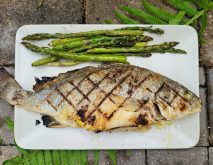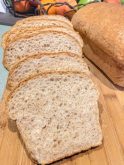“Myth information”
When it comes to food, we all have our likes, dislikes, preferences and prejudices. Many of us also live (and eat) by our “food myths.”
These can be simple “dietary must-dos” like, “you must take minerals and supplements to stay healthy” or, “you must avoid carbs if you want to lose weight.” Some food myths are opinions we form from an impression or assumption, like, “cooking takes too long” or, “reading food labels is too difficult.”
Some food myths never die, like the one about eating only grapefruit or cabbage will burn fat. New food myths are always emerging. More recently is the idea that a gluten-free diet is healthier for everyone.
Read Also

Mazergroup’s Bob Mazer dies
Mazergroup’s Bob Mazer, who helped grow his family’s company into a string of farm equipment dealerships and the main dealer for New Holland machinery in Saskatchewan and Manitoba, died July 6 from cancer.
Food myths have no scientific validity, or they may only be half-truths. The trouble is, in a world of the 24-hour news cycle and button click access to the Internet, we’re peppered by them from thousands of iffy sources.
It’s time for a reality check. Each year in March the national dietitians’ organization, Dietitians of Canada, organizes a spring campaign built around some aspect of how healthy eating can have a positive impact on our health. This year’s theme is devoted to busting food myths.
On its website, along with fact sheets, this organization has posted a list of 39 of the most popular myths dietitians hear and know are influencing how people eat. (It’s a list they note could be much longer!)
Alongside they have posted counterpoints, or “truth” statements, based on the the best science-based evidence available that directly challenges the food myth.
The campaign tackles the controversial stuff, like organic versus non-organic food, milk drinking, detox diets, pasteurization and other hot-button subjects.
Here’s a few examples:
FOOD MYTH: Processed foods have no place in a healthy diet.
THE TRUTH: Some processed foods, such as whole grain pasta, canned light tuna and plain frozen vegetables, are healthy choices. Others provide few nutrients and/or are high in calories, fat, sugar or sodium and should be limited. Some examples are deep fried foods, salty snacks and packaged baked goods such as doughnuts and croissants. Make wise food choices. Enjoy more whole foods, like vegetables and fruit. Read labels and choose foods higher in nutrients you want more of, like fibre, calcium and B vitamins, and lower in nutrients you want less of, like sugar, fat and sodium.
FOOD MYTH: Local vegetables and fruits are always more nutritious.
THE TRUTH: Fresh produce tastes great, but there are many factors that affect its nutritional value. Crop variety, growing conditions, ripeness, storage, processing, handling and transport all affect the nutrition of vegetables and fruits. Produce grown closer to home, picked when it’s ripe and eaten soon afterwards, might have more vitamins and minerals. In the warmer months, enjoy the local harvest and eat delicious, nutritious vegetables and fruit every day. If you have time and storage space, freeze or can local produce to enjoy its goodness throughout the year.
FOOD MYTH: Healthy food costs too much.
THE TRUTH: How much food costs is an important issue for many Canadians. With some planning and wise choices, you can create tasty, healthy and affordable meals. To get the most value, choose foods that are big on nutrients and low on cost. Many healthy staple foods can be lower-cost items, including bulk flours and whole grains, in-season fresh produce, eggs, legumes (dried beans, peas and lentils), powdered milk, and sale-priced frozen or canned vegetables, fruits and fish. Scanning flyers for specials, stocking up on sale items and cooking meals from scratch can all save you money.
Source: Dietitians of Canada.
Interested to hear more? Log on to www.dietitians.ca/nutritionmonth.
Here’s a really delicious recipe off the Dietitians of Canada website.
Nutty and Fruity Quinoa Salad with Maple Vinaigrette
- 1 c. quinoa, rinsed1/2 c. sliced almonds1/2 c. coarsely chopped apple1/2 c. coarsely chopped dried apricots1/2 c. toasted unsalted sunflower seeds1/4 c. dried cranberries1/4 c. raisins2 tbsp. finely chopped fresh mint1/2 c. Maple Vinaigrette (recipe follows)
In a medium saucepan, combine quinoa and two cups water; bring to a boil over high heat. Reduce heat to low, cover and simmer for about 20 minutes or until liquid is absorbed and quinoa is tender. Let stand for five minutes. Fluff with a fork.
Transfer quinoa to a large bowl. Add almonds, apple, apricots, sunflower seeds, cranberries, raisins and mint; toss to combine. Pour in vinaigrette and toss gently to coat. Serves 8.
- To make Maple Vinaigrette:1/3 c. pure maple syrup1/4 c. cider vinegar1/4 c. honey mustard2 tbsp. canola oil
In a jar, combine maple syrup, vinegar, mustard, oil and 2 tbsp. water. Seal and shake until well blended. Store in the refrigerator for up to one week, shaking well before use. Makes 1 cup.
Source: ©Cook! Dietitians of Canada. 2011. Published by Robert Rose Inc.
Veggie-Packed Spaghetti Meat Sauce
This recipe provides the four food groups in a family-favourite meal.
- 12 oz. extra-lean ground beef2 carrots, chopped2 cloves garlic, minced1 small onion, chopped1 small zucchini, chopped2 tbsp. dried Italian herb seasoning1/2 tsp. pepper2 c. milk3/4 c. unsweetened canned pumpkin purée2 c. canned crushed tomatoes1 pkg. (340 g) whole wheat spaghetti1/3 c. grated Canadian Parmesan cheese, divided
In a large pot over high heat, cook ground beef, breaking up beef with a spoon, for about five minutes or until beef is browned. Spoon off any fat. Add carrots, garlic, onion, zucchini, herb seasoning and pepper to pot and sauté for about eight minutes or until onion is softened. Gradually stir in milk; bring to a boil, stirring often for about five mins. or until about half of the milk is absorbed. Stir in pumpkin purée until blended, then tomatoes; reduce heat and boil gently, stirring often, for five to 10 mins. or until sauce is thick and flavourful. Meanwhile, in a large pot of boiling water, cook spaghetti for about 10 mins. or until tender (or according to package directions). Drain well. Stir half of the Canadian Parmesan cheese into sauce. Divide spaghetti among serving bowls and spoon sauce over top. Serve sprinkled with remaining cheese.
TIP: If you have picky eaters in your family and prefer smaller pieces of vegetables that blend into the sauce, use the coarse side of a box cheese grater to grate the carrots, onion and zucchini, or use a food processor for an even faster preparation. Pumpkin purée helps thicken the sauce and adds extra nutrients. Be sure to buy the unsweetened purée and not the sweetened, spiced pie filling. You can also cook and mash fresh pumpkin when it’s in season.
Prep. time: 15 mins. Cooking time: 25 – 30 mins.Yields: 4 servings



















